Your content marketing strategy is instrumental to the success of your business. However, content strategies are composed of a wide variety of material formats, such as your blog, email marketing, and social profiles.
You should also have lead generation strategies in place, with content offers targeting each stage of the buyer’s journey for your buyer personas.
These content offers also consist of a large subset of material, of which one of the most impactful assets you can offer is a whitepaper.
What Is a Whitepaper?

There are many different variations of whitepapers depending on the industry you’re in. While some may be more product focused for one industry, other industries might find value in creating whitepapers more similar to an ebook.
Regardless of variation, a whitepaper is a report focused on showcasing a problem with in-depth research, and it provides a solution in a persuasive way.
Ultimately, the purpose of a whitepaper is to educate your audience, as it essentially acts as a guide that walks readers through solving a problem.
A good whitepaper will earn the trust of its audience with the use of research and thus establish a sense of educational authority and credibility with readers. This is important because your goal is to use facts to persuade the reader that a particular solution is the best way to solve a unique problem.
Typically, readers expect a higher level of expertise with whitepapers than with ebooks, which are often extensions of a subject you regularly cover on a blog.
How to Create a Whitepaper
Creating a whitepaper is easier than you might think. You simply need to follow a few methodical steps.
Ideation
The first step in creating a whitepaper is ideation – you can’t create a whitepaper unless you know what it’s going to be about.
Your topic selection should be based on three factors: your audience, your area of expertise, and a solution that you have developed for a specific problem.
Audience
First and foremost, you need to determine who you’re writing this material for. If you don’t have a specific reader in mind, then you’ll have a hard time determining how to write the whitepaper and how to design your argument to convince the reader on the value of your solution.
If you don’t already have a set of buyer personas to help you write targeted content, you should develop some.
Expertise
The whitepaper should fall within the realm of your area of expertise.
For example, if you’re a social media management company, you likely wouldn’t write a whitepaper about how to sell your business using traditional print marketing methods.
Problem and Solution
Finally, consider what current problems your audience might be facing within the industry and the expertise your company inhabits.
Whitepapers address specific problems and provide solutions to them, so play close attention to any pain points that might be taking place among your audience.
Preparation
Once you’ve come up with an idea for your whitepaper, it’s time to prepare the necessary materials and information that will help you write it.
Research
Whitepapers are largely rooted in research, which allows them to gain traction with your audience. Theoretical discussions of problems and solutions won’t get anyone very far.
First and foremost, if you use any data that isn’t general public knowledge, the rule of thumb is that you should generally cite it. This practice works to your advantage anyway, as readers are more likely to trust the information you provide when you cite a credible source.
Depending on your industry, you can always conduct your own original research to test hypotheses and possible solutions.
However, you can also look for existing whitepapers on the subject, as these are a great source of information and can even provide additional perspectives on the problem you’re trying to provide a solution to.
Additionally, there are plenty of resources available for your use, such as the informational database Wolfram Alpha.
You can also utilize research groups like Forrester and Pew Research Center, whether you directly consult with them or simply access the available materials they’ve already published.
Outline
Once you’ve gathered all your research, it’s time to develop an outline for your whitepaper. Outlining is a very important part of the writing process because it allows you to carefully map out your argument for optimum effect.
There are tons of great tools to help you stay organized during this process. Options like Scrivener and Mindmaps can track your sources and ideas and help you outline content.
Every good outline for a whitepaper should include the following:
1. Headline
The headline of your outline should act as a working title for your whitepaper.
2. Executive Summary
This is essentially a brief summary on the topic of your whitepaper, and it should be no more than 200 words.
3. Intro
Your introduction should present your topic and touch on some of the key points that you will be expanding upon throughout your whitepaper.
4. Sections
Break up your outline into the main sections of your whitepaper, such as discussion of the problem and presentation of your solution.
5. Subsections
Within each section, you should include subsection headlines that will embody the key points you’ll be discussing in the material. The subsections should also include bulleted information and research data that you’ll be including.
6. Sidebars
Many whitepapers include sidebars, which can be composed of additional comments and data tables. However, on the outline level, your sidebar could also include notes that indicate additional research is required.
7. Conclusion
Your conclusion should recap the key points that you’ve made throughout your argument and drive home the value of your solution.
Writing
Once you’ve developed a detailed outline integrated with research to support your solution, you’re ready to take the next step – writing.
However, before you dive in, there’s one last thing to think about – it’s important to understand what writing a whitepaper is like compared to other styles of marketing copywriting.
There are a few unique practices you should stick to when writing a whitepaper. These include:
Stick to the Facts.
As mentioned before, whitepapers are largely research based, and your argument should always stick to the facts to drive home key points you’re trying to make.
Source Your Data.
Surely we all learned this back in grade school – plagiarism is not your friend. Any time you integrate third party research results into your work, you always need to cite your sources.
Use a Professional Tone.
Whitepapers are meant to express your level of expertise and establish an authoritative voice on your subject. You’re working with hard facts and insightful research results to deliver a solution, not having a chat with a friend.
With this in mind, whitepapers should always be written in a professional tone rather than a casual one.
Emphasize the Value You’re Delivering.
Remember, you’re not writing a simple blog post; you’re making an argument to assert why the solution you’re suggesting holds value. The primary structure of your whitepaper should largely focus on how your solution resolves the issue discussed.
Make Your Intro Strong.
Your intro should let your audience know what to expect from your whitepaper. It should tell the reader what problem is being addressed and how you’ve managed to develop a solution to it.
Establish an Editing Process.
Unfortunately, once you’ve finished writing your whitepaper... you’re not actually finished.
All good material needs to be carefully edited and revised. From checking for grammatical errors to honing the points of your argument, revision is an essential part of the writing process.
Whitepaper Formatting
There’s a specific formatting for whitepapers that you need to know about in order to structure it correctly. But don’t worry. We’re going to guide you through all the nuts and bolts of it.
Length
The general rule of thumb is that whitepapers should be at least six pages in length, including graphics, images, data tables, and references.
However, they can stretch to be more than 50 pages, if your material requires it. This is commonly seen in dense, super technical industries.
Structure
As with any professional document, whitepapers start off with a title page, a table of contents, and then a short summary.
The meat of the document begins with an introduction, and it should then segue into a discussion of the problem you’re addressing.
The latter half of the whitepaper should explore the solution you propose and craft a sound argument in support of it. Finally, a strong conclusion should close your whitepaper.
Density
Whitepapers are generally much more dense than blog posts and ebooks. They dive deeper into topics and subtopics than most blog posts do.
They can sometimes even require two reads to really absorb all the information presented. Plus, given the vast amount of data and research, whitepapers become excellent resources that readers can use to reference and brush up on for remembering key insights.
Design
Whitepapers generally have a strong design element that shapes their aesthetic appeal.
Page layout, images, fonts, color schemes, and use of data tables should all be carefully considered. In some cases, you may even want to have a graphic designer work on the project.
Here are a few key design tips that you should consider for your whitepaper formatting:
Make the Cover Page an Attention Grabber.
Use colors, imagery, and design elements to grab your audience’s attention with your cover page. Also, the title should be written in large, bold font.
Highlight Featured Quotes and Takeaways.
Important quotes and data should be highlighted throughout your document in a unique way to make them stand out to the reader.
This can be done using design elements and custom formatting.
Embrace White Space.
White space is your friend. Having an overly cluttered document with too much text on one page or excessive design elements can be jarring to the eye.
Make sure you maintain a balance between text, design, and open white space.
Visualize Data.
Creating visual representations of data in graphs, charts, and tables will make it much easier for your audience to understand and digest.
Add Variety in Fonts, Styles, and Colors of Headers.
Adding life into your headers by choosing unique fonts and different colors is a great way to make them stand out and add small design elements into your whitepaper.
Just make sure that whatever fonts and colors you choose are aligned with your brand style guide.
Include Separate Columns to Break Up Sections.
Whitepapers are dense enough as it is; you don’t need to make it any worse by lumping it all into chunky blocks of text. By breaking the text format into columns, you create smaller paragraphs and make them easier to digest for the reader.
Align Visual Motif With Your Topic.
Make sure that all the visual elements within your whitepaper align with the concepts you’re presenting. Imagery should be on theme with your topic, and graphics should add value to the information you’re presenting.
Incorporate Branding.
Your brand style should be present throughout the document to maintain consistency.
Whether you're adding specific graphic elements or simply incorporating your brand’s color scheme into headers and design attributes, consistency with your brand will make your whitepaper appear more professional.
Whitepaper Examples
Sometimes, it’s hard to envision something without an example placed in front of you. Luckily, we’ve got you covered.
Here are a few whitepaper examples to spark inspiration and help you develop ideas for your own.
Microsoft
Microsoft’s whitepaper on their AI platform is professional and on-theme with their brand. Its cover page utilizes Microsoft’s brand colors in a unique design, in combination with an image.

Source: Microsoft
It also includes the summary on the title page, so the reader knows what to expect from this particular document.
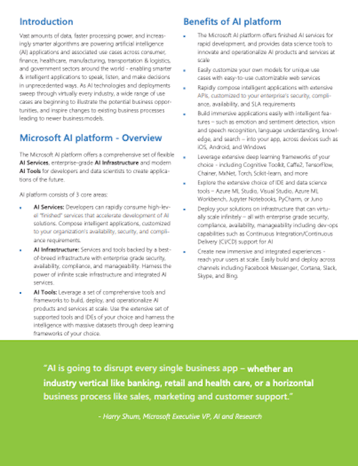
Source: Microsoft
Within the meat of the document, they use color block sections to highlight key quotes and pieces of information that are important for the reader to take note of. They also have graphics designed to help the audience understand the concepts presented.
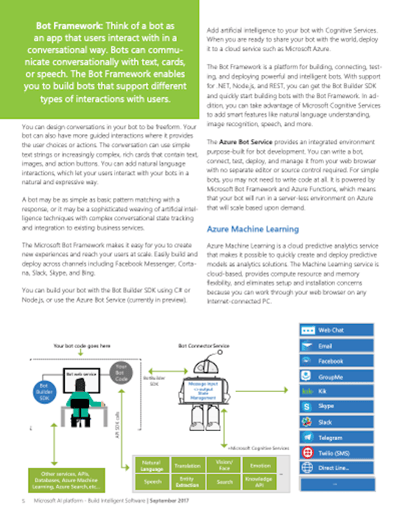
Source: Microsoft
Notice that all of the design elements, such as the color blocks, graphics, and even header fonts, stay within the brand’s color scheme, which establishes consistency throughout the document.
Moz
Check out Moz’s whitepaper on SEO reporting. You’ll notice the bold title and short summary on the title page informs the reader what to expect. Additionally, the cover page utilizes a mix of still shot imagery and graphic elements, creating an engaging mix of media.

Source: Moz
They then present the problem they’ll be addressing in the whitepaper, using large, bold text and a relevant image to express the sentiments of the issue.

Source: Moz
They use well formatted design attributes to present their information, such as this list about keyword ranking and the blocks and color boxes to segment data points.
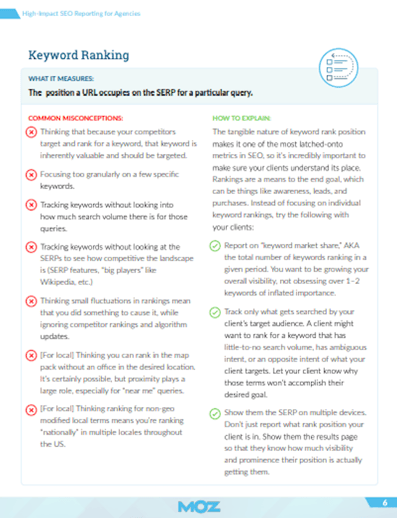
Source: Moz
Whitepaper Templates
Not all of us have graphic designers at our disposal, so we have to make the most of our resources. Luckily, there are templates available with pre-designed formats for you to use.
Here are a few great templates that you can use to build your whitepaper:
Content Marketing Whitepaper Template
Take a look at this template made for content marketing whitepapers. It uses a simple design style to combine images with lots of white space to make for a clean, professional document.

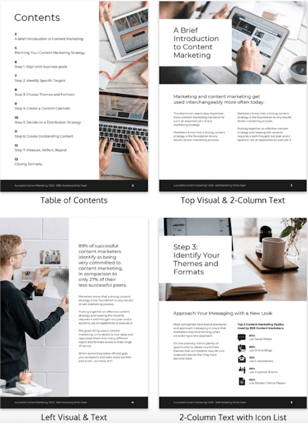
Source: Venngage
IT Management Template
This template serves well for information technology (IT) topics. It utilizes a simple, professional style with understated design elements, making ample use of white space.
It also includes multiple graphics to help visually present data to the reader.
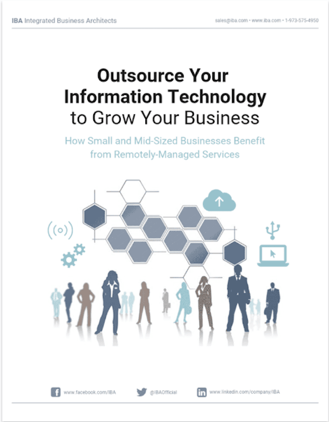
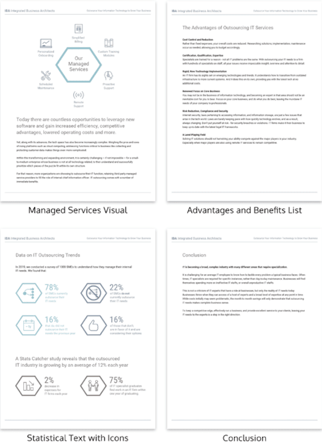
Source: Venngage
Marketing Template
This template is a great option for any number of topics, but here it's used for marketing purposes. It's a little more bold and design heavy than the previous two templates, featuring vivid colors and stylized fonts.
This template is great because it highlights core information and breaks texts into easily digestible chunks.
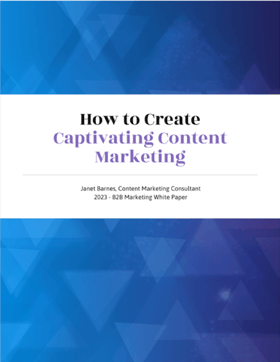
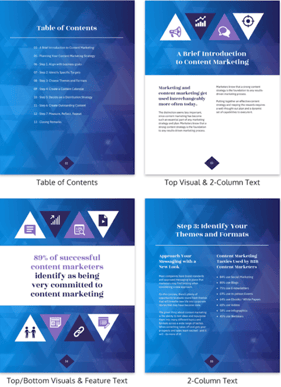
Source: Venngage
Share Your Expertise
Whitepapers can serve as incredibly valuable material for your content marketing strategy. By building a well-rounded content strategy complete with whitepapers, blog posts, ebooks, and more, your company will be able to substantially grow your business.
By displaying your expertise through whitepapers, you’ll not only be able to reach your readership, but you’ll also establish yourself as a thought leader in your industry.
Get started researching and writing your whitepaper now – your audience is waiting for your expertise.


Claire Cortese
I am a content creator here at Bluleadz. In my free time, I enjoy hugging dogs, watching reruns of The Office, and getting sunburnt at the beach.